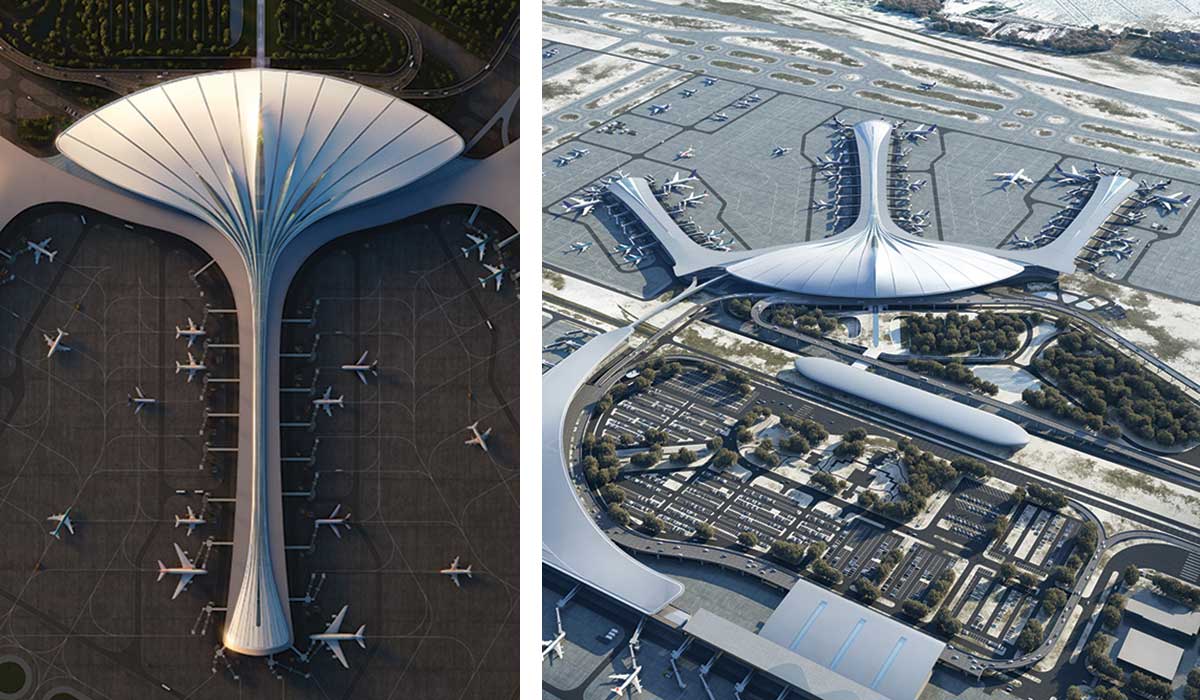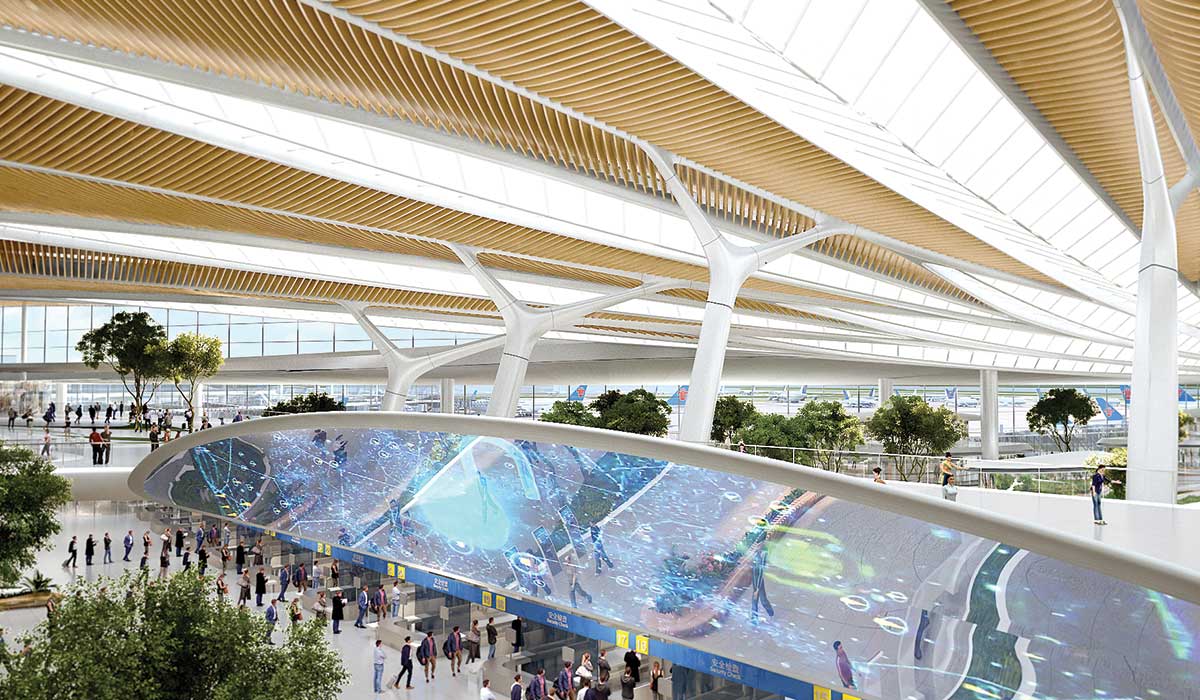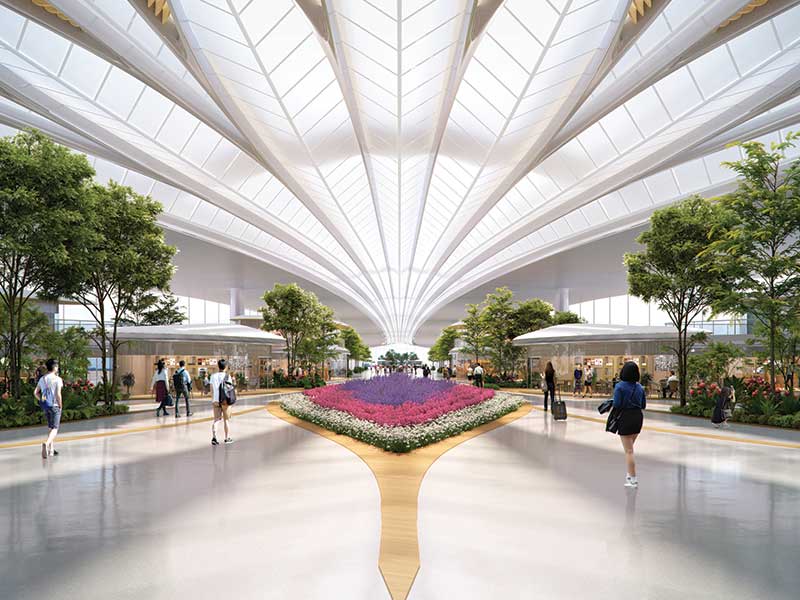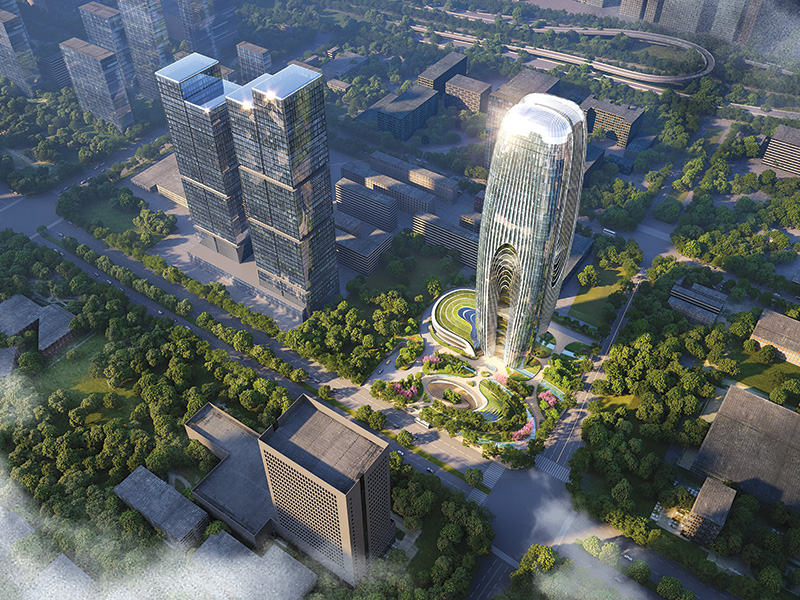Fact File
Project: Changchun Airport Terminal 3Location: Changchun, Jilin Province, China
Terminal Site Area: 177.6 hectares (1,776,000 sqm)
Terminal Building Area: 270,000 sqm
Client: Jilin Provincial Civil Airport Group Company
Consortium: China Airport Planning & Design Institute, Beijing Institute of Architectural Design, MAD Architects

MAD Architects in collaboration with China Airport Planning & Design Institute and Beijing Institute of Architectural Design has won an international competition for the design of Changchun ‘Longjia’ International Airport Terminal 3 in China.
The overall site has a footprint of 177.6-hectare, and a total building area of nearly 270,000 sqm. The terminal will contain 54 aircraft gates and is expected to accommodate 22 million passengers per year after completion, making it the biggest air transportation junction of Changchun city and entire Jilin Province which is one of the earliest manufacturing industrial metropolises with a population of 23 million.

The terminal building was designed to add a human-scaled space with a calming presence. As visitors approach from the high-speed rail ‘Longjia’ Station or the parking structure, they will be greeted by the terminal’s unique fan-shaped profile that resembles a floating feather.
By adopting a three-fingered corridor structure surrounded by arcs, the terminal will maintain an overall harmonious layout in its connections to the T1 and T2 terminal areas while increasing the number of passenger seats near the aircrafts. Upon entrance, passengers will encounter a large, uninterrupted ground floor that provides direct access to the subway, automobile road and other methods of transportation connecting the terminal to the larger site.

Additionally, passengers arriving without checked baggage will benefit from smart airport facilities such as self-service check-in machines and smart security checks. The overall spatial layout will save land and reduce the amount of earthwork, while the roofline uses height differences to reflect the cross-connections of different transportation modes from above.

The terminal also reflects the charm of Changchun as a “Garden City’’ through the creation of what the design team has referred to as a “garden airport.” The exterior space area is characterized by forests, lakes, meadows, and an undulating terrain, while the indoor garden system combines trees, ground covers, and water features to create a “cold zone garden” that reflects the local climate.
Natural light is brought into the departure hall through the feather-shaped roof to create a bright and warm interior space that provides much-needed sunlight to the garden spaces within. The structural system continues the rhythm of the building’s skin to express the logic of force transmission, which converges toward the center together with the skylight, guiding the direction of passengers naturally. The unique wooden ceiling also combines with the structure, skylight, and sunlight to create a dynamic interior space.















